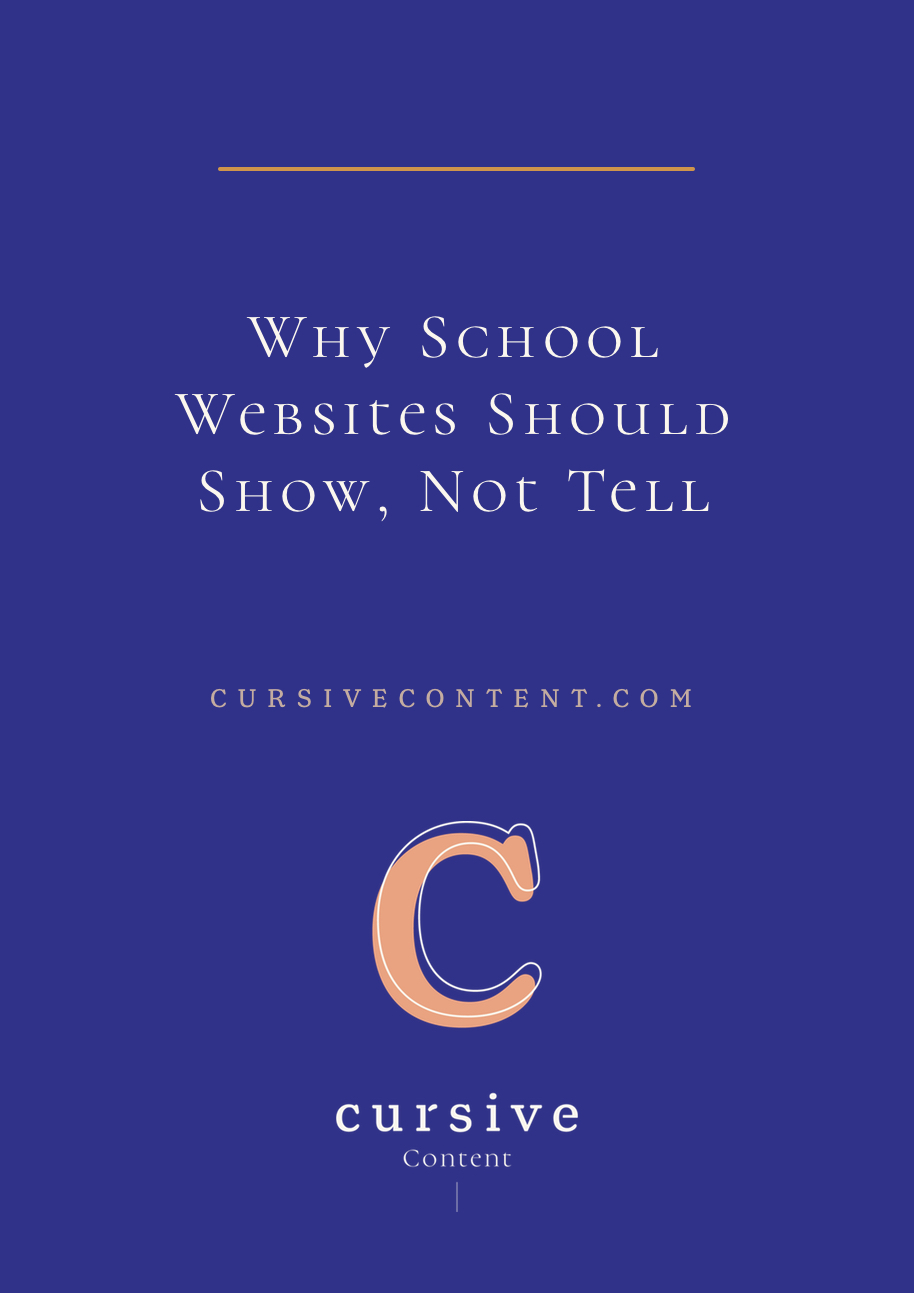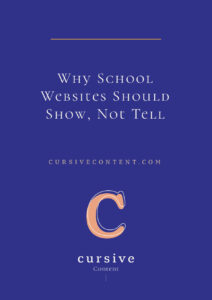Why School Websites Should Show, Not Tell

In his book Epic Content Marketing, Joe Pulizzi includes a fantastic short definition of content marketing:
“Traditional marketing and advertising is telling the world you’re a rock star. Content marketing is showing the world that you are one.”
Yes, it’s a simplified definition, but it cuts to the heart of the mindset shift school marketers need to make. Instead of creating content that tells all about your school and how amazing it is, you need to create content that makes your audience feel like your school is great—through their own conclusion. It’s the shift from “selling” your school to helping prospective students and families.
That shift in marketing philosophy is often the biggest and most difficult hurdle school marketers face, but once they’re over it, the storytelling flows.
If you’re struggling with your school’s website content, consider how these subtle shifts from telling to showing can make a big impact.
Use visuals.
There are many attributes that schools share—and talk about often. The result is that certain pages of school websites start to sound alike.
Instead of just talking about diversity, your beautiful campus, your passionate teachers and your unique approaches to learning, use visuals. And not just on the page that focus on those subjects—show it everywhere. Use real, honest photos that show these people, places and moments in action. Show it as often as you can, in as many unique ways as you can, until it becomes a given.
Make it easy for them to understand why they should care.
When you do talk about the characteristics of your school, don’t use stale, standard statements that focus on the attribute. Instead, focus on why that attribute matters.
Many schools will talk about having a diverse student population—but why does that matter to the potential student? Maybe this means your school has a wide variety of clubs and activities, or more engaging classroom discussions. Maybe it means your community is exceptionally open and welcoming. These are the attributes that will connect with potential students and families.
Why should a student care about that beautiful campus? What are the actual selling points of its location? While it’s convenient, “easy access to major highways” is not a notable advantage. Instead of telling your audience that your campus is “second-to-none” or “set on a lush 250 acres”, make it clear why they should care. Share how that lush campus creates a peaceful and connected community. Convey that your facilities have the latest technology, then show them what it can do. Explain that your highway-friendly location means that your school has the feeling of a quiet campus yet is a quick drive to a variety of cultural treasures students love.
This brings the focus away from your school and onto the student. It gives them the feeling that you understand what they care about, and that your school embodies the characteristics they desire. It begins to shape you, not as just another school, but as a place where the student can see themself thrive.
When you focus more on outcomes and less on the traditional “features and benefits” of your school, you get further from selling and closer to helping.
The push of traditional marketing tactics has lost its effectiveness (especially amongst the younger crowd), so by avoiding blatant self-promotion and refocusing on your audience, you’ll actually do a better job of attracting your ideal students and families.
Instead of talking about a characteristic, show its impact. Instead of focusing on your school, focus on your audience. And instead of selling, try to be helpful. It’s the show, not the tell, that authentically attracts your ideal audience.
Ready to create and share a powerful school story? Cursive Content’s storytelling process will transform your school messaging from scattered to strong — and then help you tell that story to your many audiences.
MORE ARTICLES
-
 How to Write a Magnetic Private School “About” Page
How to Write a Magnetic Private School “About” Page -
 How to Make Parents Love Your Website (and Your School)
How to Make Parents Love Your Website (and Your School) -
 How to Create Qualified Leads for Your Private School
How to Create Qualified Leads for Your Private School -
 3 Common School Website Problems and How to Fix Them
3 Common School Website Problems and How to Fix Them -
 How to Organize School Website Content: 6 Basics You Need to Know
How to Organize School Website Content: 6 Basics You Need to Know -
 3 Website Copywriting Facts That Should Change Your School’s Content Strategy
3 Website Copywriting Facts That Should Change Your School’s Content Strategy -
 How to Make Big School Website Changes on a Small Budget
How to Make Big School Website Changes on a Small Budget -
 How to Write Meta Data for School Websites
How to Write Meta Data for School Websites

